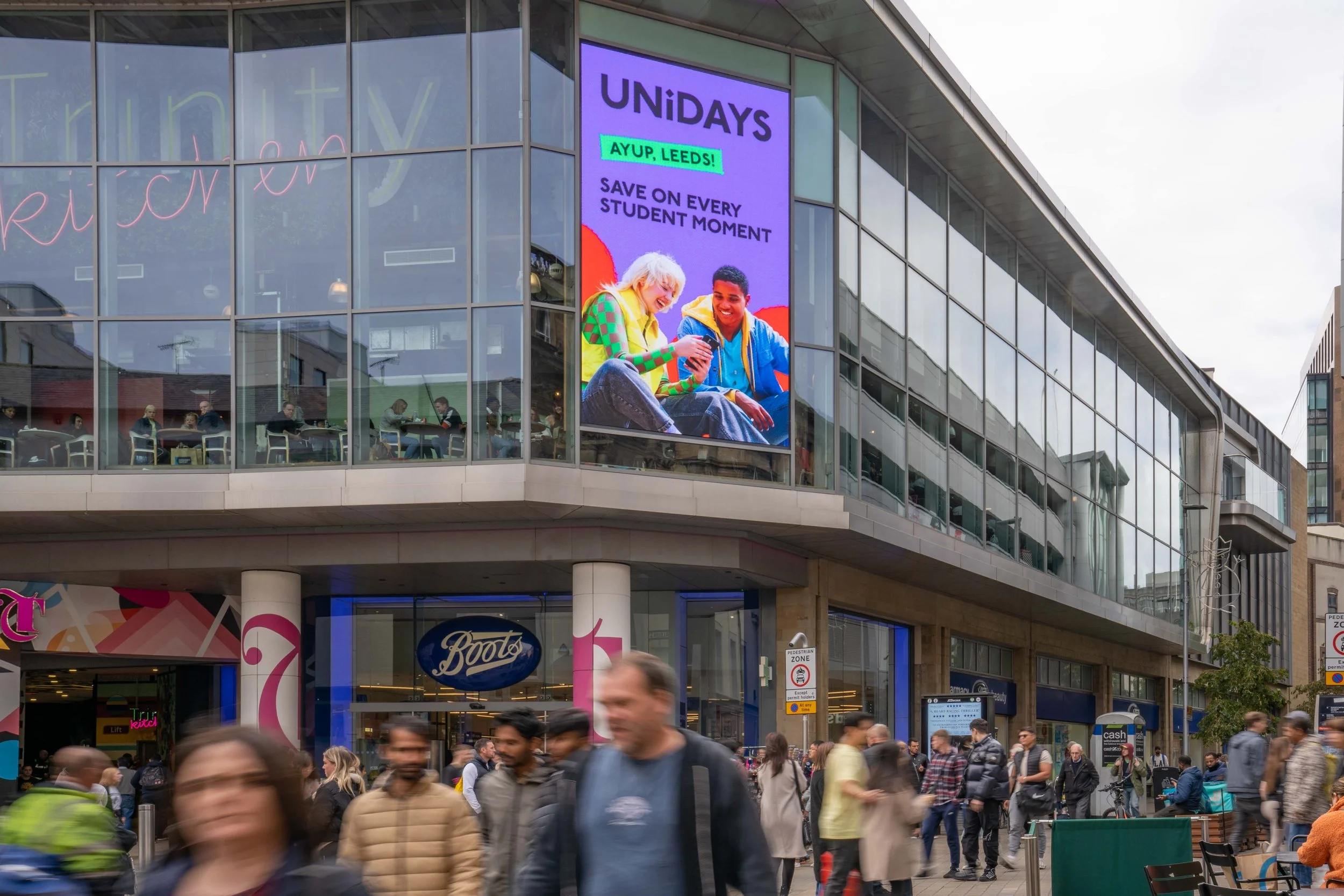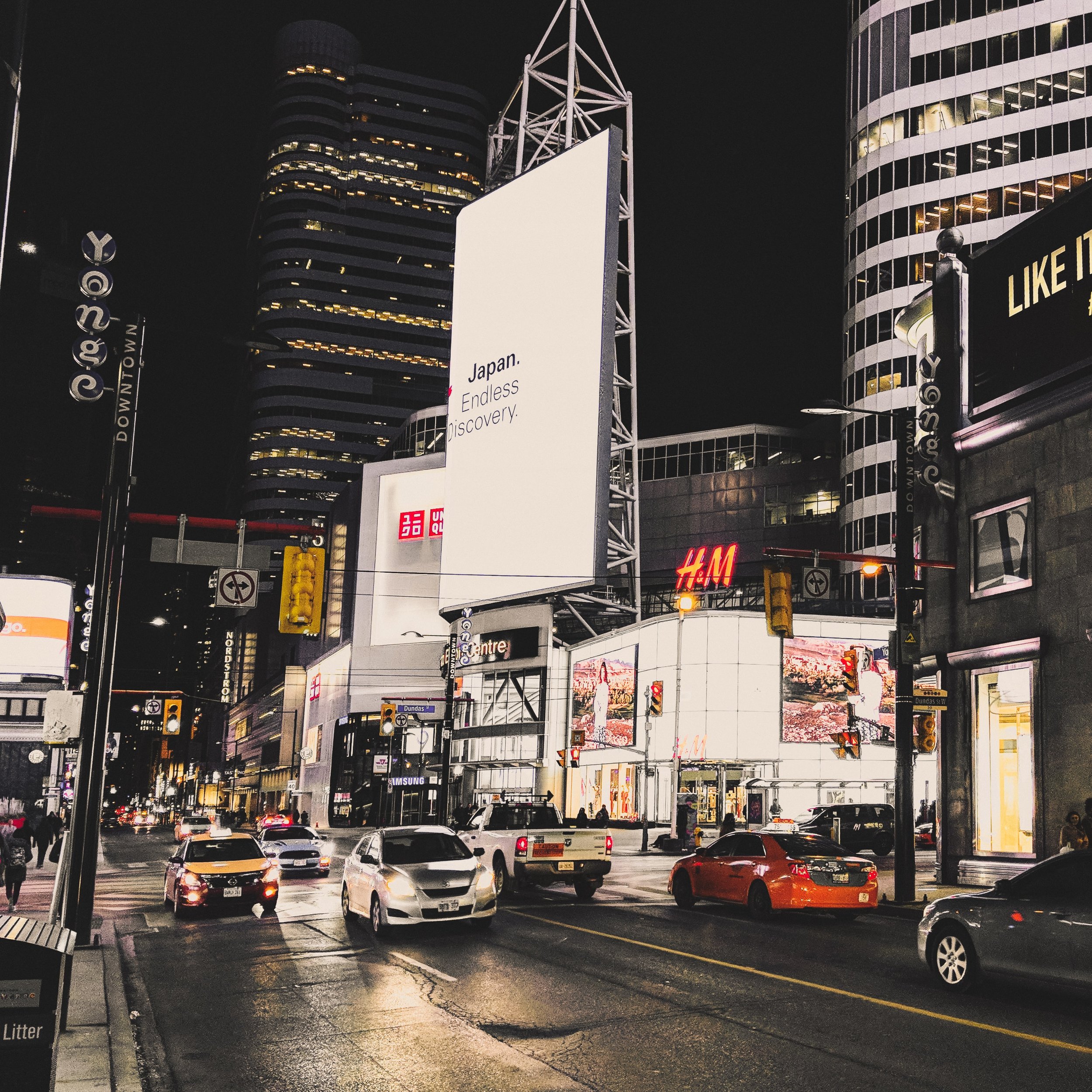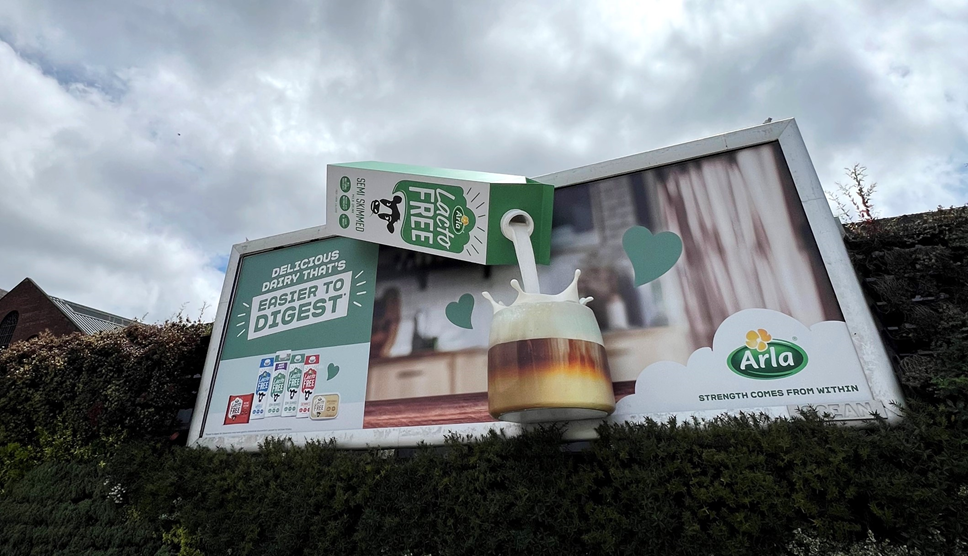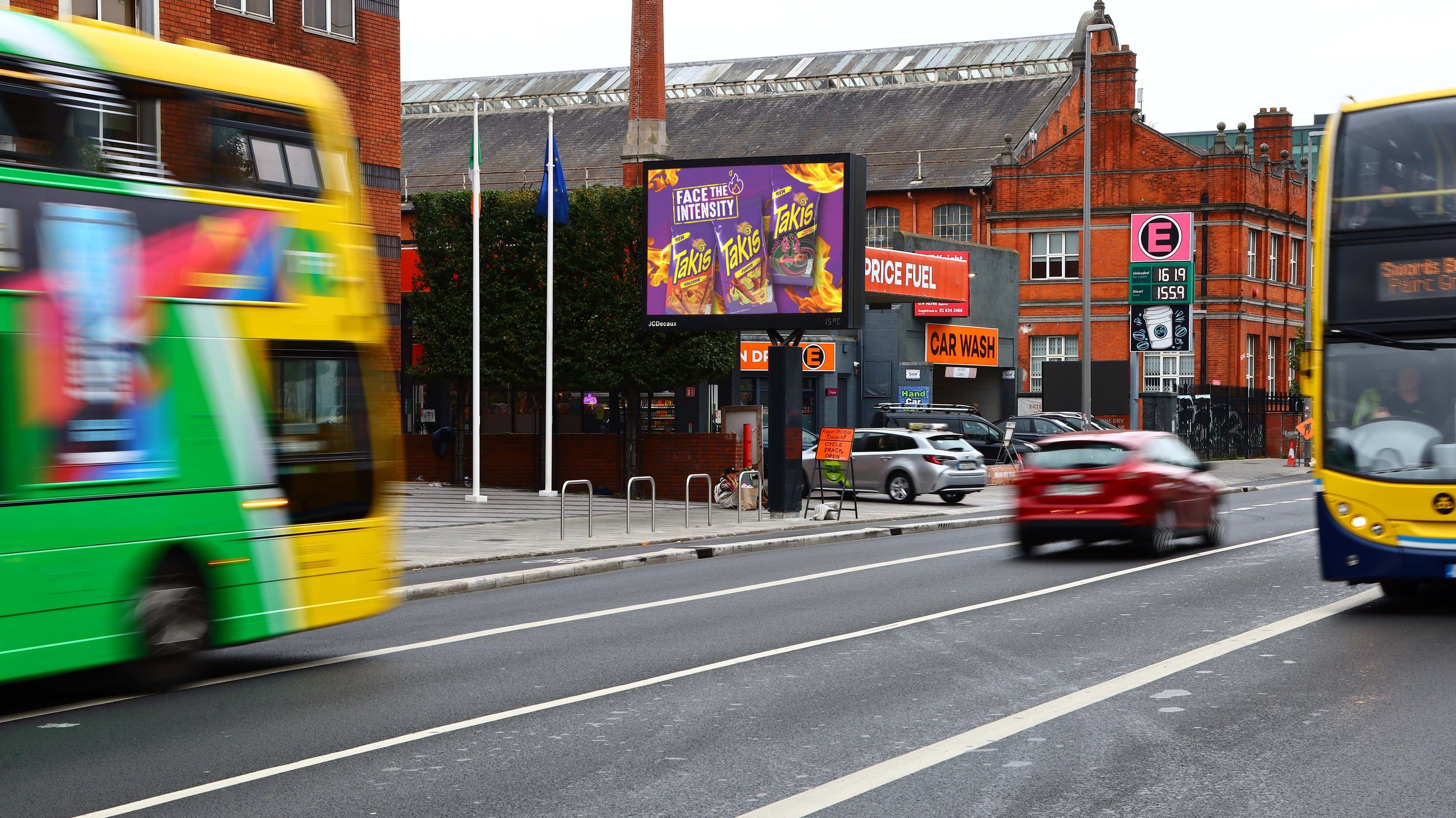OOH vs DOOH Meaning - What is the difference?
Key Takeaways
OOH (Out-of-Home) refers to traditional static formats like billboards and posters, offering constant visibility, broad reach and low CPM. DOOH (Digital Out-of-Home) uses digital screens with dynamic, real-time content, providing more flexibility, interactivity and targeting.
OOH is cost-effective, always on and ideal for mass awareness, but harder to measure and less adaptable once live. DOOH, by contrast, enables programmatic buying, precise audience targeting and performance tracking, though at a higher cost.
Neither format is “better” outright – the choice depends on objectives, budget and audience. Many brands achieve the strongest impact by combining OOH’s 24/7 visibility with DOOH’s agility and measurable engagement.
Measurement for OOH advertising has previously been a challenge and often based on estimation but has improved in recent years.
In the realm of outdoor advertising, we see the terms OOH and DOOH regularly. They each have their own unique set of differences, benefits and challenges, but what are they and how does it affect an overall marketing strategy?
In this article, we delve into OOH and DOOH advertising and explore the key differences to help you decide which is the right one for you.
London Underground Advertising - Paper 48 Sheet
What is OOH Advertising? OOH Meaning
OOH advertising is the acronym for Out-of-Home advertising - advertising that is placed and used to reach people outside of the home. This includes billboards, bus stop ads, transit ads and more.
OOH advertising is the traditional form of Out-of-Home advertising and has evolved to offer different formats, placements in various locations and the ability to target a wide variety of demographics.
Large Digital Out-of-Home Format.
What is DOOH Advertising? DOOH Meaning
DOOH advertising is the acronym for Digital Out-of-Home advertising - digital advertising that is placed and used to reach people outside of the home. DOOH advertising is pretty much the same as OOH with similar formats such as billboards and location placements, but the key difference is that messaging is presented through digital displays.
DOOH advertising includes billboards, 3D digital billboards, digital street signage and more. Digital innovation of these formats has allowed for increased flexibility, targeting, measurement and personalisation of advertisements for advertisers and brands alike.
Fundamentally, both OOH and DOOH offer broad reach and visibility as well as the ability to direct audiences to take action, whether that’s visiting a website or encouraging audiences to go to a physical location.
What Are the Key Differences Between OOH and DOOH?
OOH
Traditional Out-of-Home advertising is ‘static’ and uses printed or physical materials to display messaging. This means that messaging typically remains unchanged for the duration of the campaign and there is limited flexibility, as new messaging would require new materials. Due to the static nature of this medium, OOH advertising generally does not offer interactive features.
DOOH
Digital Out-of-Home Advertising involves dynamic digital displays that allow for content to be adapted remotely in real time depending on the content. Advertisers can schedule different messages and incorporate interactive elements into a campaign to drive engagement.
In previous years, location data was used as the primary OOH measurement tool but this was more of an estimation. Digital technology enables more accurate measurement of DOOH campaigns whereby advertisers can measure the reach, impressions, dwell time, engagement and more.
DOOH can be more expensive than traditional OOH advertising due to the set-up and maintenance costs associated.
What Are the Benefits of Traditional OOH Advertising?
OOH advertising offers brands high visibility, particularly because it’s ‘always on’. In other forms of advertising such as DOOH or digital marketing, messaging rotates between multiple advertisers or you can skip, block or turn the adverts off. OOH advertising provides a constant presence and 24/7 exposure which helps to reinforce brand messaging and ensures your brand remains on top of mind.
As one of the cheapest forms of advertising options, OOH advertising has one of the lowest cost-per-thousand impressions (CPM) rates. The cost of an OOH ad campaign does depend on a few factors including size, format, and duration, but traditional OOH advertising is typically cheaper than DOOH because there are reduced set-up and maintenance costs.
According to research, billboards have a staggering 495% return on investment (1). The return on investment may vary depending on the format, location and other factors, so it’s important to do thorough research beforehand or get in touch with a specialised team such as One Day Agency who can handle this for you.
What Are the Disadvantages of OOH Advertising?
The benefit of OOH advertising is that it offers broad reach and visibility. However, this means that it can be challenging to effectively target particular niches. Digital marketing and digital out-of-home advertising, on the other hand, have more targeting options either programmatically or manually.
Measuring interaction during an OOH advertising campaign can be difficult, so an understanding of how a campaign is performing may not be completely understood until it has been completed. This also makes it difficult to optimise and dynamically adjust content to maximise impact in real-time.
Additionally, once the advert is launched, the content typically remains unchanged for the duration of the campaign so there is limited flexibility with traditional OOH advertising compared to DOOH advertising which can be adapted in real-time.
What Are the Benefits of DOOH Advertising?
In 2023, DOOH advertising became the fastest-growing advertising channel with a remarkable +24% growth (2), signifying the increasing popularity and positive perception that marketing professionals and brands have of DOOH.
DOOH advertising allows you to target specific income groups, demographics and more based on first and third-party data ensuring your message reaches the right audience at the right time. Visuals can be quickly adapted depending on the context to increase relevance and programmatic DOOH advertising allows to target audiences on the move as they go about their daily lives.
The digital and dynamic screens that DOOH advertising uses allow for creative flexibility and interactive content types that can increase audience engagement. Advertisers can use bright and bold dynamic designs to effectively capture the attention of passersby making them a highly effective form of advertising.
DOOH advertising provides measurable metrics such as reach, impression and engagement before, during and after the campaign which allows advertisers to track the effectiveness of campaigns and adjust strategies accordingly. There are a variety of tools and technology available to advertisers to do this.
What Are the Disadvantages of DOOH Advertising?
The increased personalisation and targeting that DOOH provides tends to mean it’s more costly. Furthermore, the implementation and maintenance of the digital infrastructure can be more expensive than traditional OOH methods. This means there are many more considerations that advertisers have to think about when it comes to a DOOH campaign such as finding the right ad inventory, measuring data, Wi-Fi signal strength and more.
Some of these challenges can be solved by investing in programmatic DOOH advertising, which allows advertisers to leverage data to optimise certain aspects of a campaign automatically, helping to increase efficiency and cut costs on certain operational expenses.
Which One Is Better?
OOH and DOOH have their own unique benefits and challenges. There is no straightforward answer as to which one is better and it does depend entirely on specific circumstances.
Both ultimately serve to promote products, services, brands, events and more but understanding each one can help brands make informed decisions when it comes to integrating OOH or DOOH into a marketing strategy. If you’re looking for help with this, feel free to contact One Day today - your fully Integrated Agency.
FAQs
What does DOOH mean in advertising?
DOOH is the acronym for Digital Out-of-Home advertising. Digital and dynamic advertising is placed and used to reach people outside of the home.
Is OOH still relevant?
Despite OOH being around for centuries, it is still relevant today and has evolved to incorporate digital technology, making it a modern form of advertising. OOH is effective at capturing the attention of audiences far and wide. They can serve as brand awareness, direct audiences to take action and much more.
References
https://dashtwo.com/blog/roi-of-outdoor-advertising-in-the-united-states/
https://www.vistarmedia.com/blog/what-is-dooh#:~:text=The%20Growth%20of%20DOOH%20in%20Recent%20Years,-82%25&text=It%20has%20an%20impressive%2082,of%20total%20OOH%20advertising%20spend.
If you want to learn more about OOH vs DOOH, reach out to us today.













